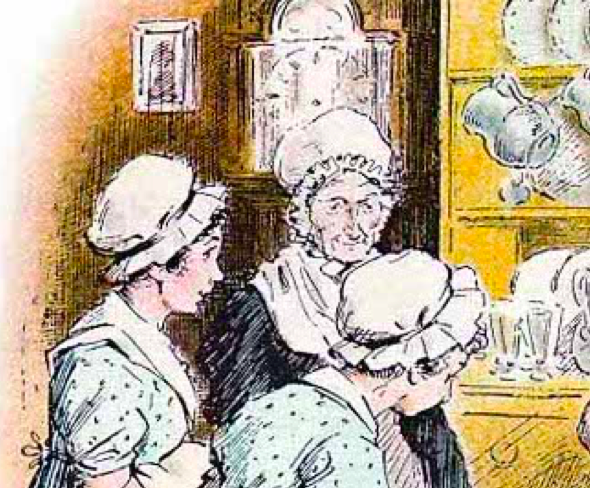By Catie Crandell, Humanities Council
Professor of English Susan Wolfson commented on “scenes of loose ends and dispersed data that resist tying up” in Austen’s Pride and Prejudice in the Humanities Council’s final Old Dominion lecture of the year. Commonly viewed as Austen’s most unified and satisfying romance, Pride and Prejudice was cast in a new light by Wolfson, who took the opportunity to highlight the “unromantic litter on the literary surface” that, in her opinion, only proves the work to be an “even more brilliantly complicated novel” than is often assumed.
Watch the video of the talk here.
“Pride and Prejudice interests me for its fissuring of the pleasures of its main marriage plot with a scatter of elements extraneous to these satisfactions. Precisely because there is consensus, whether fan-based or in the focus of disapproving critical exposure, that this is Austen’s most sparkling novel a careful close reading is needed to measure the extraordinariness of her achievement on lines other than the assured authority of the narrator,” she explained.
Wolfson’s lecture offered readings of a series of scenes, beginning with the infamous wit of the novel’s first line: “It is a truth universally acknowledged, that a single man in possession of a good fortune, must be in want of a wife.” Describing this line as a ‘packaged proverb’, Wolfson quipped: “It’s a joke, of course. Local interest exalted into universal knowledge.” It’s humor nevertheless skates over the serious reality of a mother and five daughters who will lose their home and property upon the death of Mr. Bennet. The line, as Wolfson puts it, “wrests ‘good fortune’ from a romance gloss to a cash register” and “extends the marriage into the structure of capitalism.”
From the famous opening, Wolfson turned to a series of minor characters whose roles as humor-producers distract from the harsher realities they represent, such as Mrs. Bennet’s “bargain of security over happiness” in marriage or Charlotte’s decision to accept Mr Collins as an exposure of how “novels were vehicles of improbably irrational expectation.” From secondary characters, Wolfson moved on to sublimated politics, exploring Lady Catherine De Bourgh’s role as a gesture to Burke’s reflections on male entail, and Mrs. Bennet’s question of “how anyone could have the conscience to entail away an estate from one’s own daughters.”
Then moving from the subtle to the invisible in Pride and Prejudice, Wolfson explored the ways in which lower classes and, in fact, labor, remain absent in the novel. Set in Napoleonic wartimes, the novel pays exclusive attention to the aristocracy and gentry who made up only two percent of the population. The novel, as Wolfson cannily points out, elides the experience of “abjectly exploited, miserable workers” in great manufacturing cities such as Leeds, Manchester, Birmingham, and Liverpool, “towns are not even in the periphery of Pride and Prejudice.”
Wolfson concluded her talk with an account of Mary Bennet, “evidently Austen’s least favorite character” who turns out to be “far from an ugly duckling featuring swan DNA.” A warped mirror for her author, who remained unmarried throughout her life, Mary’s efforts to educate herself and “wish to shine as sensible lingers as the plain girl’s bid to be saved by marriage from the dark and darkening prospects at home.” She ultimately signals, despite Austen’s ambivalence, a recognition of, as Wolfson elegantly puts it, “a single woman with no want to be a wife, but only to have a room of her own.”
















